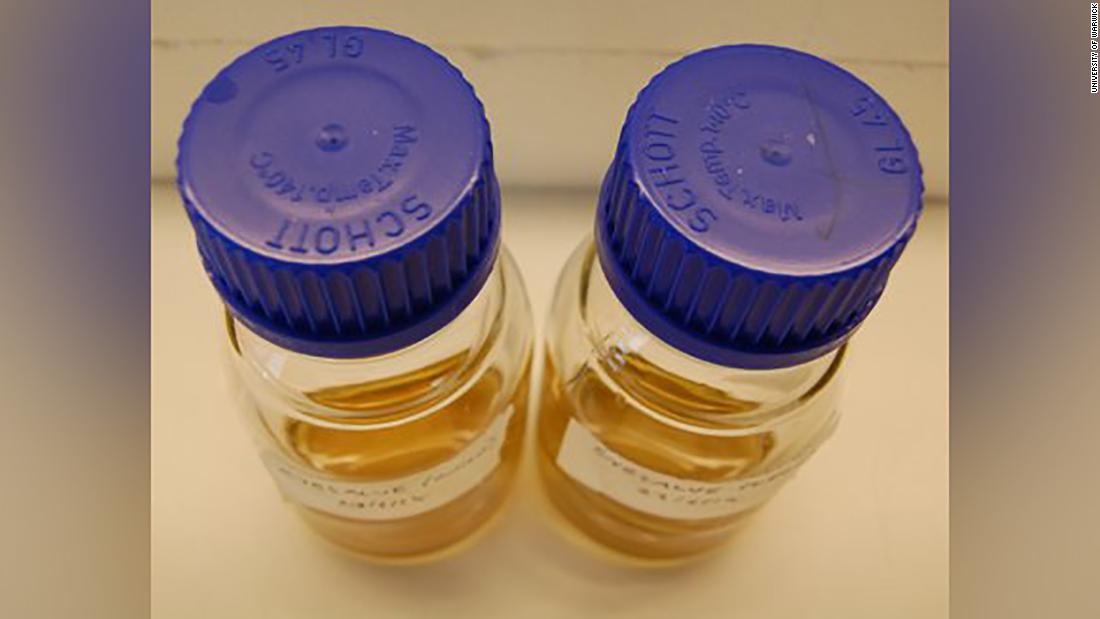
A team of UK researchers has found some hope in an unexpected place: a medieval manuscript.
A 1,000-year-old natural remedy made from onion, garlic, wine, and bile salts has shown antibacterial potential, promising to treat diabetic foot and leg infections, new research published Tuesday suggested.
Known as Bald’s eye drops, the treatment has the potential to fight biofilm infections, communities of bacteria that resist antibiotics, making them much more difficult to treat, the researchers said.
Biofilm infections are estimated to cost the UK more than a billion pounds ($ 1.3 billion) each year, according to the study.
“This is the really detailed hard work of finding out more information and seeing if it could really become clinically useful,” said Freya Harrison, a microbiologist at the UK University of Warwick School of Life Sciences and author. from The Study.
“We believe it is particularly promising for the treatment of diabetic foot infections. They are the latest super resistant biofilm infection. They are a huge economic and health burden. They really can become intractable,” he said.
“There is a high risk that these diabetic foot ulcers are completely resistant to any antibiotic treatment. Then there is a risk that a person will develop sepsis … and people will end up amputating their foot or leg.”
Early medical text
The brew was among the prescriptions for medicines, ointments, and treatments in “Bald’s Leechbook,” an Old English bound book found in the British Library. It is one of the earliest known medical texts.
“When you read it as a microbiologist, you think it has to do something because every ingredient in it has some antibacterial activity when you test it in a test tube. It seemed sensible,” said Harrison.
“It is also clearly directed at a bacterial infection from the description of symptoms in the book.”
They made the mix using garlic and onions bought from ordinary supermarkets or greengrocers, while the wine was English white. The bile salts come from the stomach of a cow.
Casual project
The research project came about by chance after Harrison, who has a passion for medieval history and enjoys historical re-enactment, learned of the book. He teamed up with former colleague Christina Lee, an Old English specialist at the University of Nottingham, where Harrison used to work.
“To be honest, we didn’t go into this thinking that in five years’ time it would be something we would have translation funds for. We thought it would be just an interesting piece of microbiology.”
Interestingly, Harrison said that “Bald’s Leechbook” also contained a remedy for malaria using wormwood, which was endemic in parts of England in the early medieval period.
“All that time essentially the same remedy was sitting in an English medieval text, but no one had taken it seriously,” he said.
Modern medicine
Antibiotics underpin modern medicine, and if they lose their effectiveness, medical procedures like surgery and chemotherapy could become too dangerous.
One of the key findings of the study was that it was the mixture of natural products, rather than a single compound, that gave Bald’s eye drops its “potent anti-biofilm activity.”
The team has also been testing the safety of the mix and preliminary research expected to be released soon shows it “has a promising safety profile,” said Harrison. The next step would be to chemically characterize the mixture and start patch tests on human skin, but the coronavirus pandemic delayed the last one.
Harrison said the nature of the investigation of a combination of ingredients, rather than a single plant or compound, could make the regulatory approval and development process take longer.
“In the next year we hope to have an idea of chemistry, a better idea of safety, and then it would be a case to say that it is really effective, but I am sure you know this work takes a long time,” said Harrison.
“It is important to recognize that the most exciting-looking potential antimicrobials ultimately do not translate into a product. Therefore, we must be very realistic and do detailed work to see if it will be useful.”
.